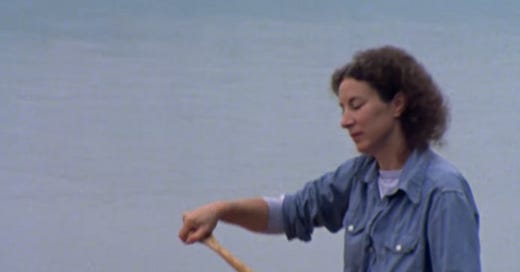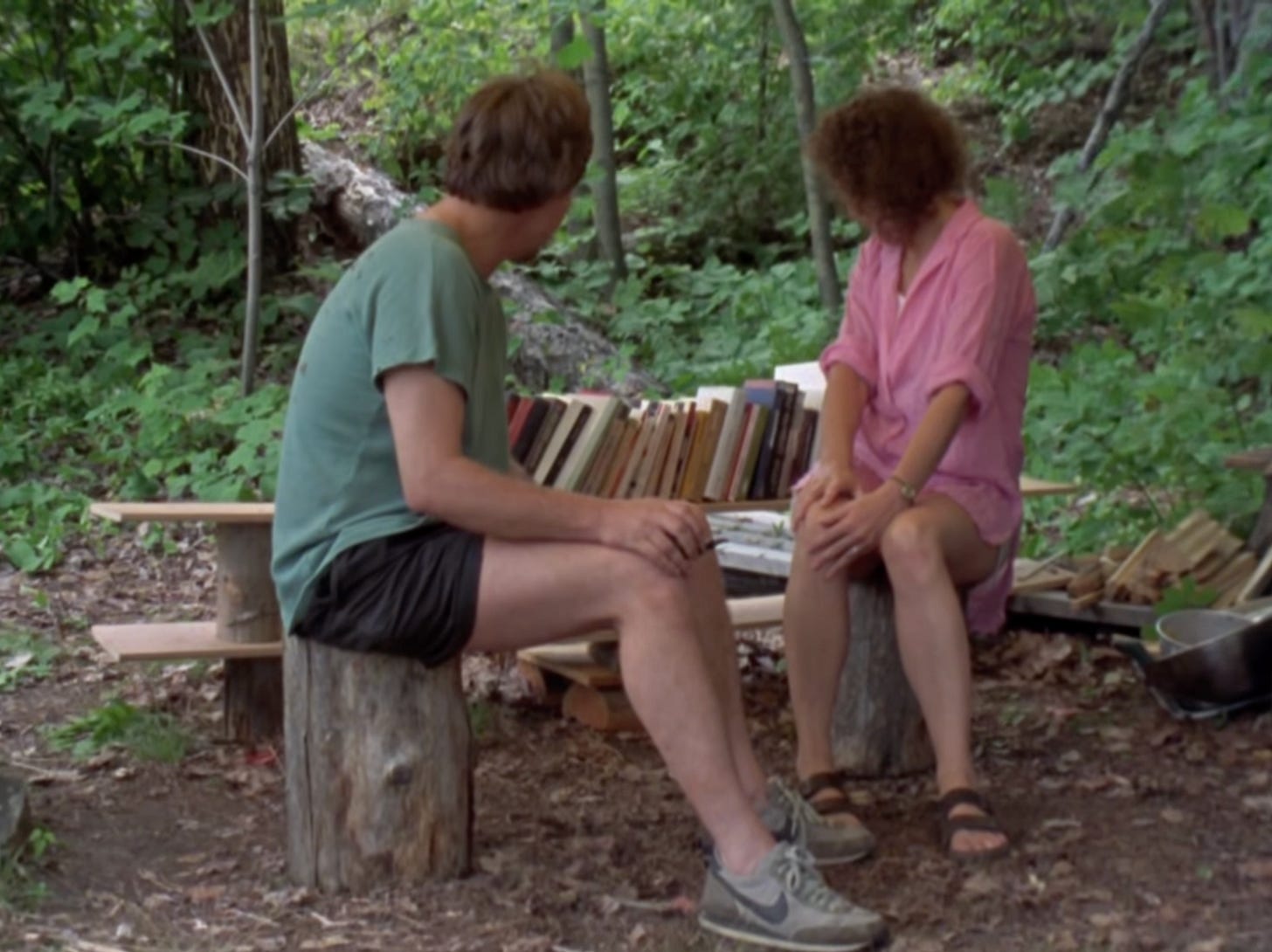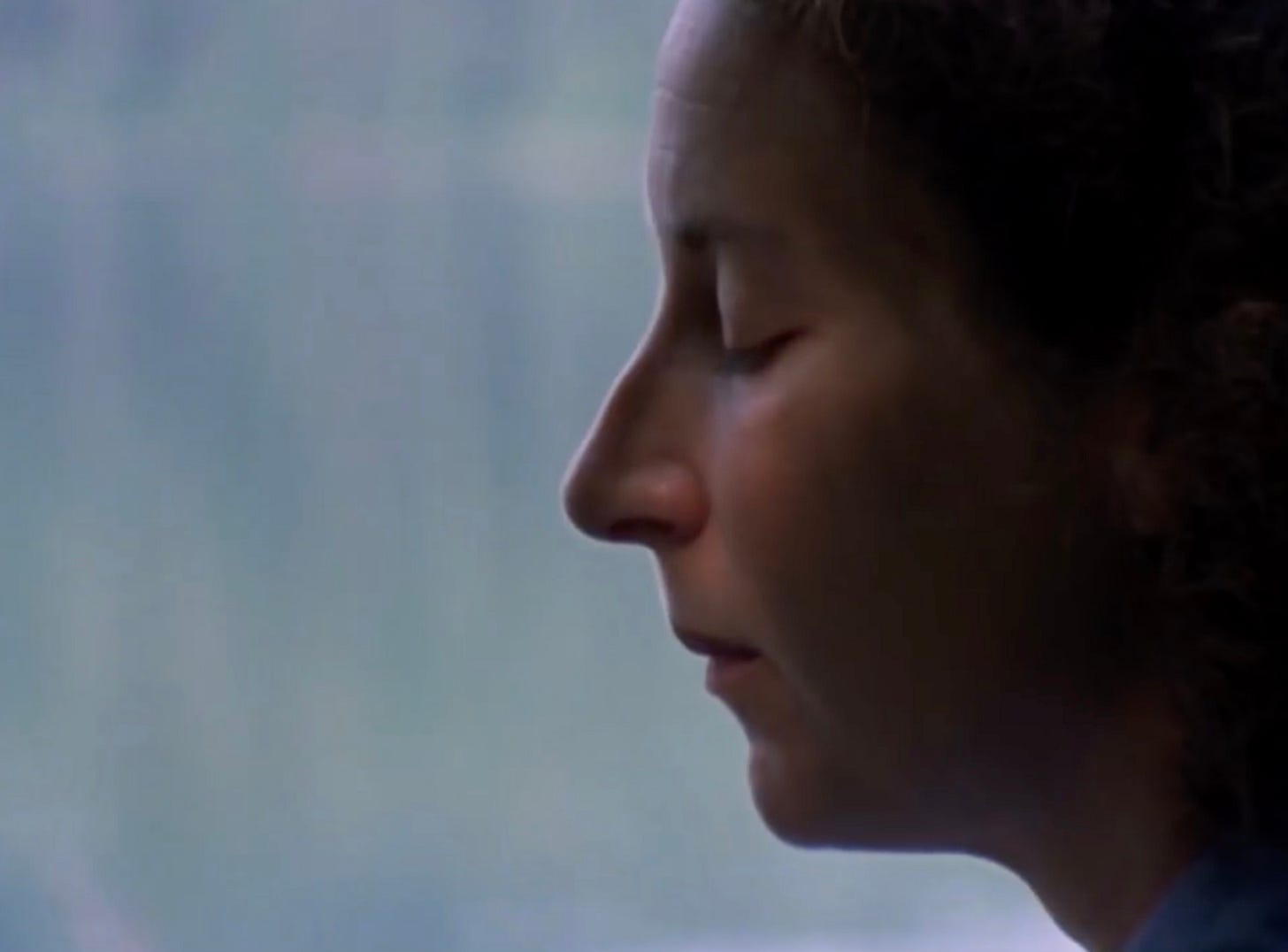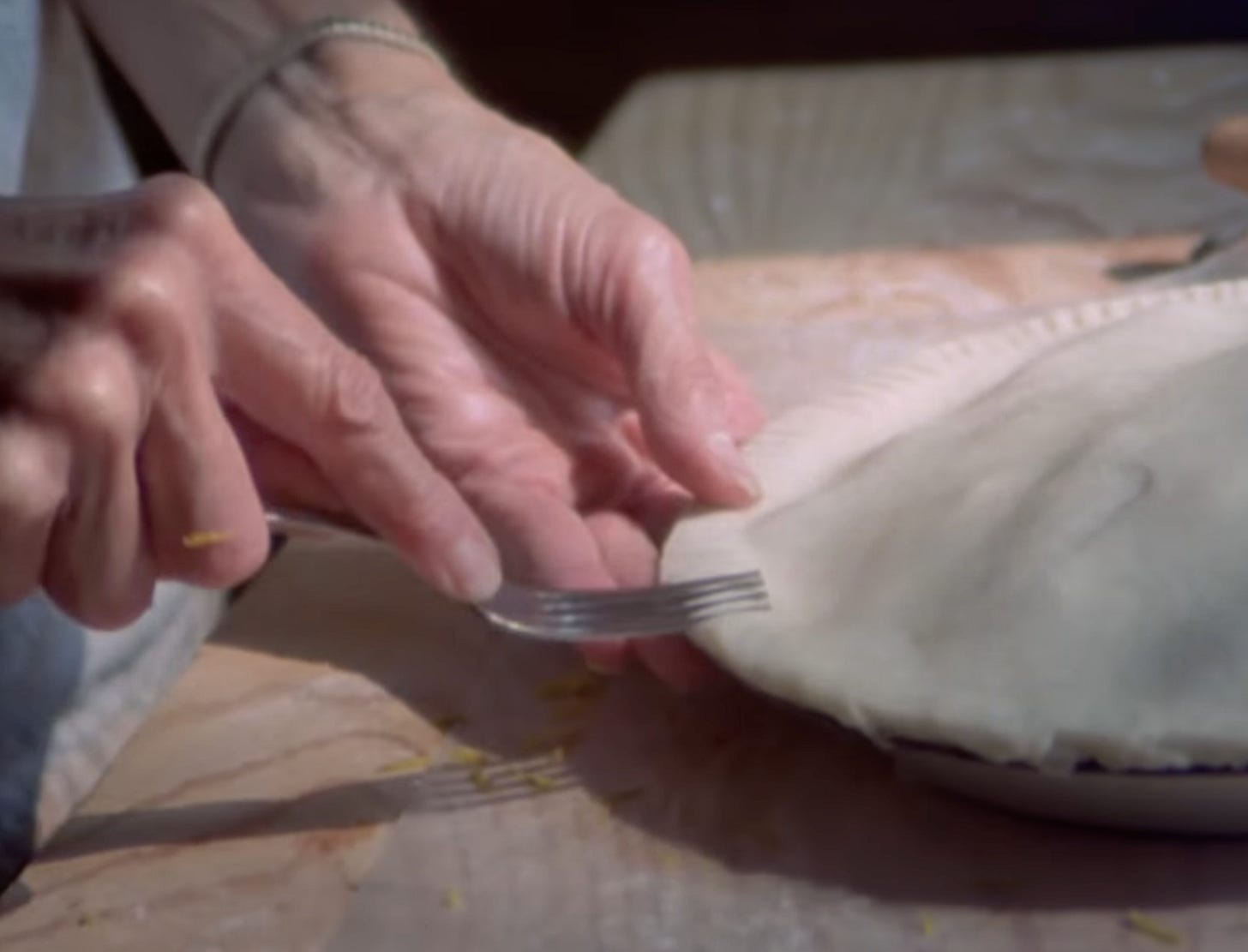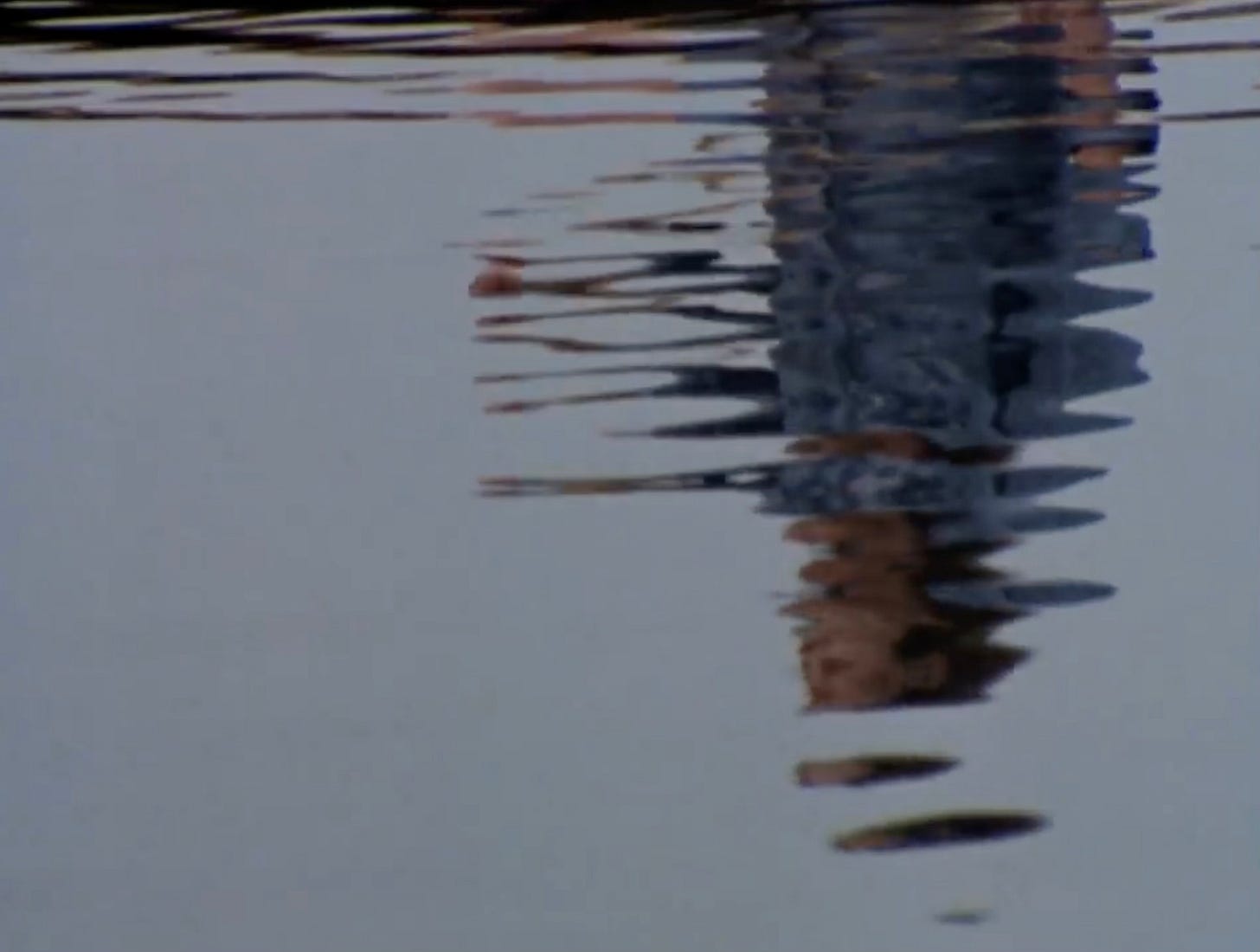“For me she’s an island on which no boats land. They circle. They peer at her. But no boats land. That’s how I have seen her. Through binoculars.”
These are the words that conclude the documentary Once in August, produced in 1984 by the National Film Board of Canada, and directed by filmmaker Michael Rubbo. It’s become a tradition for me to watch the film as the month draws to an end. I love any documentary that explores the writing life (this one—incredibly atmospheric, almost eerie in tone—is perfect for the end of August, a month marked by its moodiness) but there’s another reason too: Atwood, in a sense, loomed over the landscape I grew up in. Her old farm is a ten minute drive from my childhood home.
In high school I had a friend whose mother was a gardener, and sometimes she would stop in at clients’ properties en route to dropping us off in town.
“Margaret Atwood used to live here,” she once noted as we travelled along a gravel driveway.
By then I had devoured Atwood’s poetry, photocopying pages from the volumes in our school library. Our English class had recently completed a semester studying The Handmaid’s Tale. We felt a bit starstruck, for the ten or so minutes it took her mother to water the gardens, enchanted to be wandering the grounds where an author we admired once lived. The land out there is quietly famous for its rolling hills, its bucolic country scenes—cattle grazing, tractors puttering down dirt roads. And Atwood, of course, is a master of setting, conjuring place in sentences that are at once concise and expansive, poetry doubling as fact, which is why Once in August is so engrossing—despite rebuking the director’s claims that her fiction must be gleaned from her personal life, it is obvious that her surroundings have influenced her work at least a little.
How much of a writer’s life trickles into the work? And if a writer’s life appears in her work, how much of it is true? These are the questions at the heart of the documentary, along with the director’s assumption that Atwood is haunted, and her books, which he describes as somber in tone and filled with female victims, are drawn from her “repressively benevolent” upbringing. Michael Rubbo’s persistence makes for a brutal (and amusing to watch) fifty-seven minute tête-à-tête with one of the sharpest minds in contemporary literature.
A boat with the documentary’s skeleton crew washes ashore on the Atwood family island, a remote spot on a vast lake, where they will spent nearly a week with Atwood, her partner, the writer Graeme Gibson, their daughter Jess, and Atwood’s parents and brother.
In a 2010 article for the Sunday Times, she wrote:
“There is no name for the actual spot; look for the town of North Bay and the Ottawa River, then go northeast from there… The cabin was an anchor point for quite a long time. It was part of my childhood. I remember waking up there surrounded by a lot of light and birdsong. It smelled of cedar from the peeled cedar walls, logs and wood smoke from the stove, with an undertone of tar from the oakum stuffed between the logs… The cabin was in existence for 18 years until it got struck by lightning and burned down… We had already started building a bigger cabin, which, although it wasn’t finished, could be lived in. The family still use it, and my brother schedules the time each sibling or offspring spends in it. He makes a spreadsheet… It’s the same location as the small cabin, so I can stand on a piece of earth with a lot of bushes on it where my bedroom once was. Which is a slightly creepy feeling. It’s layers of time.”
Rubbo fixates on the similarities between the setting of Surfacing, Atwood’s hallucinatory 1972 novel about a young woman who ventures to a desolate island in northern Quebec to search for her missing father, and the Atwood family island, latching onto parallels, becoming obsessed with proving that Surfacing’s storyline must be based on Atwood’s real life.
From Surfacing:
The trouble is all in the knob at the top of our bodies. I’m not against the body or the head either; only the neck, which creates the illusion that they are separate.
The trouble, in the case of this documentary, begins and ends with its director believing that a reader can ever truly know a writer of fiction.
In her 2002 book, Negotiating with the Dead: A Writer on Writing, Atwood references an epigram tacked to her office bulletin board: “Wanting to meet an author because you like his work is like wanting to meet a duck because you like pâté.”
"That’s a light enough comment upon the disappointments of encountering the famous, or even the moderately well-known - they are always shorter and older and more ordinary than you expected - but there’s a more sinister way of looking at it as well. In order for the pâté to be made then eaten, the duck must first be killed. And who is it that does the killing?”
As Atwood reads from the novel (once heralded as “The most shattering novel a woman ever wrote”, and “Even better than the Bell Jar!”), images of the cabin’s surroundings appear: the slate sky, pines looming over a still lake (a pensive Atwood paddling across it, solo in a red canoe), the landscape cloaked in a gloomy mist.
“We slide back, through the gradual dusk. Loon voices in the distance; bats flitter past us, dipping over the water surface, flat calm now, the shore things, white-grey rocks and dead trees, doubling themselves in the dark mirror.”
Admittedly, it’s difficult to blame Rubbo for believing Atwood has incorporated some of her personal life into her work; the similarities are stunning when the text from her novel is juxtaposed with footage from her island.
“Around us the illusion of infinite space or of no space, ourselves and the obscure shore which it seems we could touch, the water between us an absence. The canoe’s reflection float with us, the paddles twin in the lake. It’s like moving on air, nothing beneath us holding us up; suspended, we drift home.”
The Atwood family cabin is also memorialized in a poem from her 1970 collection, Procedures for Underground:
Rubbo remains convinced that aspects of Atwood’s personal life have found their way into her work. If her novels—“full of ghosts”—are haunting then she herself must be haunted. But Atwood insists, “Surfacing is fiction. I use settings, but that’s not to be confused with using real people and things that have actually happened to those real people.”
Eighteen years later, in Negotiating with the Dead, Atwood would clarify:
“All writers are double, for the simple reason that you can never actually meet the author of the book you have just read. Too much time has elapsed between composition and publication, and the person who wrote the book is now a different person.”
Many other writers echo her sentiments.
Ray Bradbury advises that “There’s the Ray Bradbury that writes, and the ‘me’ that watches him. I can’t believe that there are two of me, and I’m the witness now, to what I did before. And I think I am so lucky that God made me in two halves—the creator and the witness.”
Rebecca Solnit says, “As a writer, you withdraw and disconnect yourself from the world in order to connect to it in the far-reaching way that is other people elsewhere reading the words that came together in this contemplative state.”
And there is also the famous adage from Marguerite Duras—“To write is also not to speak. It is to keep silent. It is to howl noiselessly.”
What does it matter, knowing a writer, when everything we could ever dream of knowing is already there, on the page, captured in the noiseless howl?
From Jean Rhys: “All of a writer that matters is in the book or books. It is idiotic to be curious about the person.”
At one point, Graeme attempts to intervene, encouraging Rubbo to pivot his questioning - “There’s a problem with words like demons and hauntings because it’s in the tradition of the artist as an absolutely tortured soul. A lot of writers have exploited that… That the artist is somehow cursed. And therefore, because some artists are cursed, all art must come from being cursed. And a lot of writers don’t accept that. Peggy doesn’t. I don’t. Instead of asking about demons and hauntings, maybe ask about the Muse. It’s a much more classical thing… It’s a voice… The Muse sustains, and encourages, and leads.”
Atwood is asked whether she has a Muse, though the answer isn’t what Rubbo is looking for:
“I did have one, but only for poetry. A female. Old.”
The film is also enjoyable for Atwood’s sobering ability to humble, disarm and educate the film’s tenacious director, who seems hellbent on fitting a square peg into a round hole. The viewer can’t help but wince in schadenfreude; the NFB even went so far as to describe it as an “unconventional interview-gone-wrong” on their Facebook page.
“What are you drawing?” Atwood asks, days into filming, wearing a purple bandana, a set of paints by her side. By this point there is a thrum of tension, the two of them having posed and rebuked theories and answers with the persistence of bucks during rutting season.
“Well, I’ve chosen something incredibly difficult to do—because I’m doing you.”
This answer doesn’t seem to rattle Atwood in the least.
“That’s very symbolic, isn’t it?” she coos.
One Youtube commenter perfectly delineates the tone of the documentary:
“She doesn't suffer fools gladly, especially when they're interviewing her.”
Back to Negotiating for a moment:
When writers have spoken consciously of their own double natures, they’re likely to say that one half does the living, the other half does the writing, and—if of a melancholy turn of mind—that each is parasitic upon the other.
“Very frustrating,” Rubbo later notes in a voiceover. “They are all—Peggy, her mother and her father—not much like the characters in Surfacing. Seems like I’ll have to abandon the idea of it being autobiographical.”
The documentary ends with Rubbo asking Atwood where she’ll go “from here”. The film was released in 1984, a year before her career-defining novel, The Handmaid’s Tale, was published.
“Ever onward,” she answers, without a beat.
Rubbo and his crew leave the island.
“For the most part,” he admits, defeated, “she had eluded us.”
But what was he expecting?
As she writes in Negotiating:
“The author is the name on the books. I’m the other one.”
The books mentioned in this newsletter:
Survival: A Thematic Guide to Canadian Literature
Negotiating with the Dead: A Writer on Writing
Watch Once in August here.


